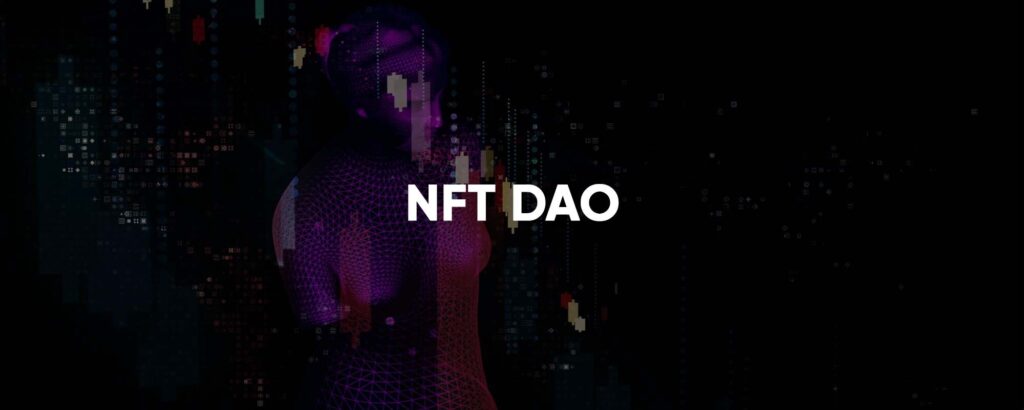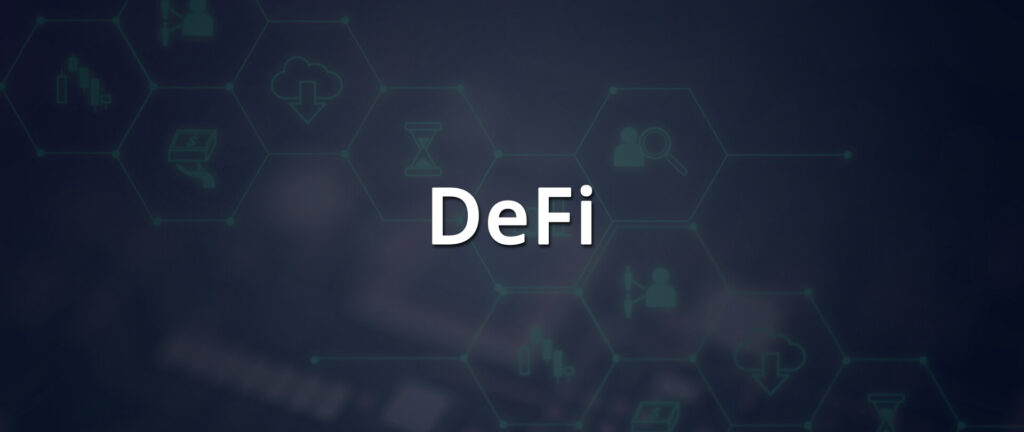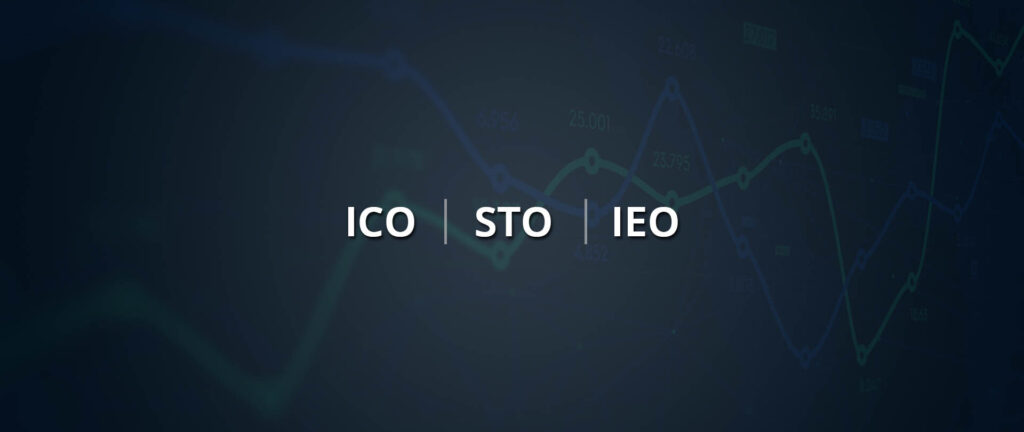NFTs are selling for a crazy amount of money around the world. From digital cats and tweets to music and doodles, everything gets tokenized today through non-fungible tokens. Amid the growth of web3, NFTs, DeFi, and crypto tokens, blockchain investors were looking for ways to leverage an entirely new blockchain model. That’s when DAOs, aka Decentralized Autonomous Organizations, were introduced to improve community action on the internet. Seeing the possibilities of DAO, many blockchain enthusiasts started believing that DAO can play a better role in the monetization and governance of NFTs.
This blog explains what DAOs are and how they can potentially improve the existence of NFTs in DeFi.
- What are NFTs?
- What is DAO?
- DAO membership models
- Why do we need DAOs?
- How does a collective NFT DAO work in the ownership economy?
- How does a DAO Work?
- What do NFTs have to do with DAO?
- Some Popular NFT DAOs
- Conclusion
What are NFTs?
We define NFTs as non-fungible tokens, which means the cryptographic assets are unique and irreplaceable. For example, if you take a 1 rupee coin, it can be replaced by another 1 rupee coin. Therefore, it is a replaceable or fungible asset. An irreplaceable asset is called a non-fungible asset.
A token is a cryptographic asset represented on a blockchain, such as Bitcoin, Ethereum, Dogecoin, etc. Tokenizing a crypto asset offers better financial capability, security, and transparency, thus solving the issues of unbanked and in-trade financing. Bitcoin and NFTs are both tokens, but they are not the same since users can replace a bitcoin with another. However, NFTs are irreplaceable and unique. NFTs are like collectibles that have only one holder. Many digital artists, rappers, and musicians are trying to create and sell NFTs of their own. Now NFTs have found their way into DeFi, and this is where DAO comes into action.
Read More: What are Non-fungible tokens or NFTs?
What is DAO?
A Decentralized Autonomous Organization (DAO) was developed as an autonomous organization to provide better governance in the blockchain. In the beginning, it was just an open-source code of a program designed to complete a specific function. Later DAO progressed to a stage where both its members and coded program could provide governance in the network.
It is a community-led organization and has no central authority. A DAO is a wholly autonomous and transparent organization wherein smart contracts establish rules and execute agreed-upon decisions.
All the rules and transactions of a DAO are recorded transparently on the blockchain. The stakeholders generally vote to decide the rules. If most stakeholders vote on a specific proposal, it gets updated on the live server. Members of a DAO are not tied by any formal contract but by a common goal and network incentives connected to the consensus rules.
Read More: Creating an NFT on Solana with Metaplex Candy Machine
DAO membership models
Different models of DAO membership determine how the voting and other vital functions work in a DAO.
Token-based membership
Token-based membership helps govern broadly decentralized protocols or the tokens themselves. Here the governance tokens are traded permissionless on a decentralized exchange. Simply holding the tokens itself grants the users access to voting.
Example
MakerDAO: MakerDAO’s token MKR is widely available on decentralized exchanges so that anyone can buy voting rights in the Maker’s protocol in the future.
Share-based membership
Share-based DAOs do not require permission. However, any member can submit a proposal to join DAO, which offers tribute of value in tokens or work. This membership also governs protocols and tokens and offers direct voting power and membership. Human-centric organizations like charities, investment clubs, etc., use this model.
Example
MolochDAO: MolochDAO focuses on funding Ethereum projects. They require a proposal to access the membership to check whether you have the needed competence and capital to decide the guarantees, and we cannot buy access to DAO in an open market.

Read More: What is DeFi 2.0, and why does it matter?
Why do we need DAOs?
DAOs are a safe and effective way to collaborate with like-minded peers worldwide. Starting a business or venture requires an unfathomable trust, especially with a financial stake. And if cybercrime is any testament, we know it’s not all that simple to trust someone on the internet.
But with DAOs, we don’t need to trust anyone but the DAO code—a transparent and verifiable code.
Let’s understand how DAOs compare to traditional organizations.
| Traditional Organization | DAO |
| Hierarchical | Flat & fully decentralized |
| Depending on the structure, DAO may demand changes from a sole party, or it may offer voting privileges. | Members are required to vote for any change to be live. |
| The votes get counted manually and are tallied with great care internally. | Votes are easily `tallied, and the outcome appears internally. |
| Typically private activity with limited knowledge gets carried out in public. | All activities are transparent and completely public. |
| Prone to manipulation. | Services offered are handled automatically in a decentralized way. |
Read More: Top 10 Doubts And Questions On NFTs Answered
How does a collective NFT DAO work in the ownership economy?
DAOs are the set of contracts used to govern organizations, NFTs are the assets, and ownership is the common link between them. Both DAO and NFTs operate on ownership, as NFTs help provide ownership to the creators or artists, whereas DAOs offer governance. The collaboration of DAO and NFTs can bring a new form of decentralized media and investment to the internet. An artist can put their artwork or content on the blockchain, which helps them with the security, verifiability of art, and individual ownership.
DAO helps NFT creators to come together and become organized in groups of two types, individual or collective. Famous artists can sell their NFTs because of a huge fan following; however, new or upcoming artists require a joint unit to showcase their art. This collective unit will help them pay out the token holders with their investment, marketing, crowdfunding, etc. A DAO governs these types of collectives.
If you are planning to launch an NFT project, make sure to consult with a reliable NFT development company to do a feasibility analysis for using the best blockchain framework for your project.
Related article on NFTs in Digital Entertainment
How does a DAO Work?
- Smart contracts help us create rules through community voting
A DAO operates on rules and regulations established through smart contracts on a blockchain. These rules are publicly available and verifiable, allowing any member to easily view the contract, all decisions, and financial transactions of the DAO.
- Users can fund DAO’s growth by purchasing the DAO’s native tokens
Once the rules get formally written onto the blockchain, the DAO needs to figure out how to receive funding and bestow governance. Users can raise funds by selling tokens and filling the DAO treasury. In return for their fiat currency, token holders gain certain voting rights and influence decisions by creating and voting for proposals. Once the funding is complete, the DAO is ready for deployment.
- Receive governance tokens to influence the token distribution and treasury management
Once there’s enough funding for a DAO to kick-off, token holders will decide the rules of DAO through a consensus vote. As the DAO’s stakeholders, community members will work towards the most beneficial outcome for the entire network. Beyond voting rights, members can also work for their DAOs where they can get governance tokens in return, including roles in token distribution and treasury management.
A famous and rather primitive example of a DAO is Bitcoin. The Bitcoin protocol defines the organization’s rules, and the bitcoin currency provides an incentive for users to secure the network. Therefore, different participants can work together to keep Bitcoin running as a DAO.
Read More: Legal considerations for launching an NFT marketplace
What do NFTs have to do with DAO?
DAOs can bring a lot to the NFT world. It helps the NFT industry through collective ownership of an asset. Typically, investing in NFTs requires significant capital, and not everyone can afford this. DAOs can help a group of people collectively own a high-value NFT without investing large sums of money.
An example of this is the PleasrDAO. It is a collective of DeFi leaders, early NFT collectors, and digital artists that collects funds for highly valuable NFTs. PleasrDAO members collectively share the cost and ownership of assets for all NFTs the organization buys.
The second way DAOs support NFTs is by providing a model for community governance. DAOs allow fans and creators of NFT projects to come together and decide the future course of action.
A famous example is the Gutter Cat Gang DAO, where those who own Gutter Cat NFTs vote on decisions relating to the NFTs. Another example is the MeebitsDAO set up by the Larva Labs’ Meebits NFT project members. Through the DAO, this community aims at building a metaverse for the avatars.
The third link between NFTs and DAOs comes from NFT Creator Collectives, especially emerging artists. For an NFT project to succeed, strong community backing is essential. While this may be a cakewalk for already famous artists, emerging creators need to work hard to achieve this.
DAOs as collectives of NFT creators can help fundraising, community building, marketing, etc. An example of an NFT-backed token is WHALE. It is a social token backed by The Vault—which holds some of the rarest and most valuable NFTs across blockchain gaming, digital art, virtual real estate, etc. The governance of the Vault is with DAO, whose members hold the WHALE tokens and contribute to the project’s growth.
Some Popular NFT DAOs
- SharkDAO
A decentralized autonomous organization brings together a group of strangers to pool funds to acquire rare NFTs. SharkDAO focuses only on Nouns (a generative art NFT project) and has reached 5 Nouns. It has 400 members who have together raised 1000 ETH. Members receive SHARK tokens in exchange for ETH.
- APE DAO
APE DAO’s launch was made possible after fractionating 49 BAYC NFTs and a female CryptoPunk into 1000k APED tokens. With this DAO, anyone can own parts of these highly sought-after NFTs. The tokens for this DAO sold out within four days of launch. The members donated more NFTs like Avastar, CyberKongz, Punk’s Comic, etc.
- Jenny Metaverse DAO
Operating on the Unicly platform, the Jenny Metaverse DAO acquires NFTs and stores them in a vault. The native uJENNY token represents the NFTs, and token holders gain governance rights and can vote on decisions such as releasing NFTs from the Vault, acquiring more NFTs, etc.
- YGG DAO
Unlike NFT arts and collectible, YGG DAO focuses on in-game assets from blockchain and NFT games. It issues ‘YGG tokens’ for members to vote on decisions relating to YGG’s business and governance and participate in DAO-related activities.
- Rarible
A community-owned NFT marketplace, Rarible gives its members the right to participate in protocol governance, amend existing protocols and propose platform upgrades. The implementation of DAO is made possible with a native RARI token. RARI holders can also participate in Rarible’s community-based platform moderation. It helps to curate content marketing on the platform.
To understand it better, below are some examples of how you could use a DAO-
- Charity: Anyone across the globe can be a part of the donation and membership procedures, and the group will decide how to use these contributions.
- Freelancer Network: Here, you’ll be able to set up networks of contractors who pool their funds for office spaces and software subscriptions.
- Ventures and Grants: You could initiate venture funds and grants to pool investment capital and begin voting procedures. The money returned can be redistributed amongst the DAO members.
Conclusion
Decentralized Autonomous Organisations provide several highly valuable use-cases within the NFT industry. These use cases will continue to grow in the coming times. With the way they decentralize the organization structure and functioning, DAOs may become a must-have for NFTs projects in the future.


